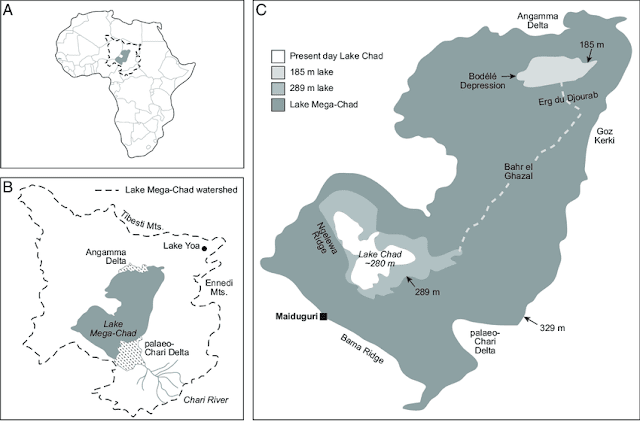Urban-Rural divide: Cape Town
In contrast to a lot of my blog posts in which I have focussed on the Lake Chad Region, I wanted to do a post on an urban area and the implications of climate change on water there. It is important to remember environmental change does not just affect natural environments and, in some cases, they arguably have a greater impact on urban environments.
Cape Town's water supply
Historically, South Africa has side-lined investment in the natural environment in favour of social and economic development (Ziervogel et al. 2011). In Greater Cape Town, urban use is the biggest consumer of water whereas in rural areas of the Western Cape, agricultural is the largest consumer. In Cape Town there are numerous problems with the water supply. This includes issues with availability, quality, processing waste water and equitable access to water. Water supply in the Western Cape is managed by the City of Cape Town alongside the National Department of Water and Sanitation (Otto et al. 2018). The system almost totally relies on surface water from rainfall stored in 14 regional dams. The reliance of the system on rainfall makes it extremely vulnerable to even small perturbations in climate (Ziervogel et al. 2011).
The future and adaptations
As of December 1st, the population of Cape Town have been allowed to use 105l of water per day, up from 70l, as water restrictions were lowered from Level 5 to Level 3 (Mail & Guardian 2018). As well as allowing an increased supply, tariffs on water consumption have also decreased by 33.5% for use under 6000l per month.
Cape Town's water supply
Historically, South Africa has side-lined investment in the natural environment in favour of social and economic development (Ziervogel et al. 2011). In Greater Cape Town, urban use is the biggest consumer of water whereas in rural areas of the Western Cape, agricultural is the largest consumer. In Cape Town there are numerous problems with the water supply. This includes issues with availability, quality, processing waste water and equitable access to water. Water supply in the Western Cape is managed by the City of Cape Town alongside the National Department of Water and Sanitation (Otto et al. 2018). The system almost totally relies on surface water from rainfall stored in 14 regional dams. The reliance of the system on rainfall makes it extremely vulnerable to even small perturbations in climate (Ziervogel et al. 2011).
Figure 1: Drought risk in different municipalities of the Western Cape Region.
Source: Western Cape Government
There was successive below average rainfall in the Western Cape province from 2015-2017 (Otto et al. 2018). Figure 1 shows the drought risk in different municipalities in the region and the type of drought that municipality is at risk of experiencing. There are a significant number of areas which had declared hydrological drought, especially towards the west of the region. The City of Cape Town is located in one of the regions which declared a hydrological drought.
Day zero?
Day zero?
Day zero refers to the day when a city completely runs out of water, meaning that they must shut off water supplies (Curnier 2018). Reaching day zero would make Cape Town the first major city to completely run out of water. A 'Day Zero' disaster this year was narrowly avoided as a result of public compliance with water use restrictions (Red Cross Red Crescent Climate Centre 2018). However, public water restrictions are not a sustainable or long-term solution. Coming so close to the taps running dry is only a reminder of bigger changes which are needed to combat the impact of climate change on urban water supply. The City of Cape Town's response to approaching Day zero was enough to avert the disaster, but the management caused a number of unwanted problems including increasing water tariffs and lowering water pressures (Winter 2018).
The future and adaptations
As of December 1st, the population of Cape Town have been allowed to use 105l of water per day, up from 70l, as water restrictions were lowered from Level 5 to Level 3 (Mail & Guardian 2018). As well as allowing an increased supply, tariffs on water consumption have also decreased by 33.5% for use under 6000l per month.
Table 1: Implications of climate change scenarios in the Western Cape region.
Source: Ziervogel et al. 2011
Source: Ziervogel et al. 2011
Table 1 demonstrates that water availability and quality concerns in the Western Cape are expected to continue into the future under current climate projections. The projected 5-15% increase in evapotranspiration will likely exacerbate water shortage problems if the region continues to rely so heavily on surface water resources. Overall, the trends predicted in Table 1 suggests that Cape Town and more widely the Western Cape region, must adapt quickly to the changing climate. Thus far, Cape Town has avoided investment in large-scale water management infrastructure such as desalination plants, in favour of addressing the immediate Day Zero crisis with quick fixes (Winter 2018). There is a balance which needs to be met between short and long-term water security. As a result, the City of Cape Town has begun setting out a Water Strategy Plan in order to ensure a water-secure future.





It’s interesting that you’ve decided to look a Cape Town in this post as most of your others have focussed on more rural areas. Do you think climate change poses a greater threat in rural or urban areas of Africa?
ReplyDeleteI think it’s hard to say at this point, obviously with over half the world’s population living in cities, climate change in cities has the potential affect more people. However, in rural areas increasing climatic variability often hits communities very hard. It’s also difficult to say as different populations rely on different proportions of surface and groundwater for their water supplies so it really needs to be assessed on an individual basis.
ReplyDelete